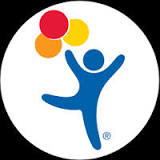Near Infrared Spectroscopy for the Detection of Acute Kidney Injury in Children Following Cardiac Surgery
| Status: | Completed |
|---|---|
| Conditions: | Renal Impairment / Chronic Kidney Disease, Cardiology |
| Therapuetic Areas: | Cardiology / Vascular Diseases, Nephrology / Urology |
| Healthy: | No |
| Age Range: | Any |
| Updated: | 11/18/2012 |
| Start Date: | July 2011 |
| End Date: | September 2012 |
| Contact: | Katja M Gist, DO |
| Email: | katja.gist@childrenscolorado.org |
| Phone: | 214-534-2220 |
Use of Near Infrared Spectroscopy (NIRS) for the Early Detection of Acute Kidney Injury in Children Post Cardiopulmonary Bypass
One in a hundred children is born with a heart defect. Some children require heart surgery
within the first few days of life, while others can wait until they are older. A
complication of open-heart surgery is low blood flow due to the heart-lung machine that can
cause sudden loss of kidney function known as acute kidney injury (AKI). AKI causes
complications that can increase hospital length of stay and increase risk of death. Current
ways to identify AKI are not able to it until 2 or 3 days after it has occurred. Because of
this, there is not a specific treatment for AKI. If the investigators diagnose AKI early,
they might be able to treat it and improve outcomes in children. NIRS is a skin monitor that
can detect low blood flow to the kidney and might help diagnose AKI when it occurs in the
operating room. The use of NIRS to diagnose AKI early is the focus of this study.
Near infrared spectroscopy (NIRS) is a noninvasive tool used for continuous monitoring of
regional tissue oxyhemoglobin saturation. Sensors are placed on the head and abdomen or
flank and use light to measure the percent oxygen levels in tissues. Head NIRS has been
correlated with oxygen levels of the blood returning from the brain, and an abrupt decline
in post-operative cardiac patients has been shown in retrospective studies to predict an
impending event such as cardiac arrest. Animal studies have demonstrated that somatic NIRS
monitoring is able to detect flow-induced changes in regional oxygen levels of the kidney
and gut directly under the sensor. Unlike cerebral NIRS monitoring, there is no data
regarding the clinical utility of NIRS over the abdomen and flank in predicting outcomes.
Children are at risk of decreased organ perfusion following cardiac surgery, and is a
phenomenon termed low cardiac output syndrome (LCOS). It occurs in approximately 25% of
neonates and young children following cardiac surgery. The effects of LCOS on end organ
function, specifically the kidney may result in acute kidney injury, thereby increasing
morbidity and mortality. The incidence of acute kidney injury (AKI) following cardiac
surgery is reported as high as 40%. The use of NIRS in the operating room to detect AKI in
pediatric patients undergoing cardiac surgery is the focus of this proposal Specific Aim 1:
Determine if a reduction in renal NIRS intra-operatively identifies patients with AKI
Hypothesis: Reduced intra-operative renal NIRS will precede the diagnosis of acute kidney
injury by an increase in serum creatinine within 1 to 3 days post-cardiopulmonary bypass
Specific Aim 2: Determine if a reduction in renal NIRS intra-operatively correlates with
increases in emerging biomarkers of AKI.
Hypothesis: Reduced intra-operative renal NIRS will precede the development if AKI as
detected by neutrophil gelatinase-associated lipocalin, IL-6 and IL-18 by at least 2 hours.
Inclusion Criteria:
- All children less than or equal to age 4 undergoing cardiac surgery with the use of
cardiopulmonary bypass at Colorado Children's Hospital
Exclusion Criteria:
- Prior enrollment in the study
- Agre greater than 4 years
- Use of nephrotoxic drugs within 48 hours of surgery
- Underlying renal dysfunction (preoperative estimated Schwartz clearance less than
80ml/min/1.73m2)
- Gestational age less than 34 weeks at the time of surgery
- Withdrawal of care planned
We found this trial at
1
site
Children's Hospital Colorado At Children's Hospital Colorado, we see more, treat more and heal more...
Click here to add this to my saved trials
